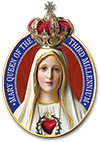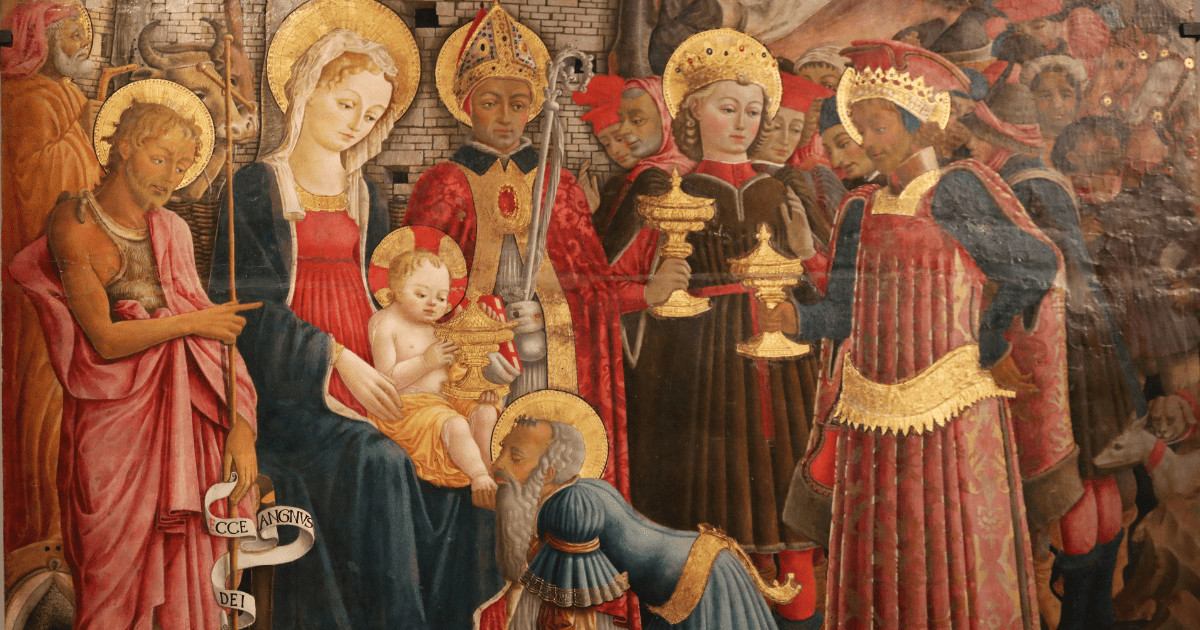Solemnity of the Epiphany
In that extraordinary event, it is not the star that determines the Child’s abode, but the Child who guides the star, predisposing the Gentiles to open their eyes to the true God.
The portrayal of Our Lord Jesus Christ’s birth has always been a main theme in sacred art, as well as an important instrument for catechesis on the mystery of the Incarnation. While tradition attributes the creation of the nativity scene to St. Francis of Assisi, Christians have sought to represent the august event through artistic expression since the first centuries of our era. The painting in the Catacombs of Priscilla in Rome, considered the oldest reproduction of the Saviour’s nativity, depicts the Virgin Mother, the Child and St. Joseph.
But is there any biblical foundation for including the Magi in the nativity scene, usually as illustrious monarchs, essential figures of the Solemnity of the Epiphany of the Lord?
Who were the Magi?
The visit of these stately pilgrims is narrated by St. Matthew as follows: “Now when Jesus was born in Bethlehem of Judea in the days of Herod the king, behold, wise men from the East came to Jerusalem, saying, ‘Where is He who has been born King of the Jews? For we have seen His star in the East, and have come to worship Him’” (Mt 2:1-2).
The term Magi, from the Greek μάγοι, refers in this context to wise men, dedicated to the study of astronomy, who governed their lives according to the movement of the stars.
St. Matthew says nothing of the royal dignity of the Magi, but various commentators, seeing the fulfilment of Old Testament prophecies in these distinguished personages, identified them with the sovereigns spoken of by the Psalmist: “May the kings of Tarshish and of the isles render Him tribute, may the kings of Sheba and Seba bring gifts! May all kings fall down before Him, all nations serve Him” (Ps 72:10-11).
Adoration of all of humanity
According to St. Rabanus Maurus, the Magi who came from the East to adore the Child Jesus were Chaldean philosophers, men highly respected in their country; kings and princes decided all their affairs based on the science of these men.
However, concerning the Magi’s place of origin, St. Matthew only says that they came “from the East.” In addition to authors who pin their nationality to Chaldea, others believe they came from India, or even Persia. Nevertheless, across the centuries, Christian tradition has portrayed them as representatives of the three continents known until that time: Europe, Asia and Africa. Accordingly, in their sublime gesture of adoration, all of humanity knelt before the newborn Divine Infant.
In this way, the visit of the Magi – who were not of the Chosen People – can be understood as the joining of two wisdoms, that of the Gentiles with that of the true religion, for “religious and philosophical wisdom is clearly a force that places man on the right path; in conclusion, wisdom leads to Christ.”
Symbolism of the Magi: their age and their gifts
Christianity ascribes deep symbolism to these noble figures, drawn, for example, from the fact that they numbered three, and they were of three distinct ages, depicting the three stages of man’s life, namely, youth, maturity and old age.
St. Bede named and described them. Melchior, senex et canus, was an elder with a long beard and thick white hair. Gaspar, iuvenis imberbis, rubicundus: a robust and ruddy youth, was yet beardless. Balthasar, fuscus, integre barbatus, a man in his full maturity, with a dark complexion and short beard. The Catechesis celtica, from the ninth and tenth centuries, supplies an intriguing interpretation of the spiritual significance of these three ages: “The advanced age of the first teaches us austerity of character; the youth of the second encourages us to follow the precepts of God; the perfect age of the third counsels us to guide our lives toward perfection in every ambit.”
That the Magi Kings numbered three is indicated by the gifts they brought: gold, frankincense and myrrh.
It is fitting to mention the prophecy in which Isaiah refers to the gifts offered by these wise strangers: “And nations shall come to your light, and kings to the brightness of your rising. […] A multitude of camels shall cover you, the young camels of Midian and Ephah; all those from Sheba shall come. They shall bring gold and frankincense, and shall proclaim the praise of the Lord” (60:3,6).
Guided by the star, the Magi found the Child with Mary, His Mother, and kneeling before Him, they adored Him. St. Leo the Great comments that they adored the Word in flesh; Wisdom in infancy; Omnipotence in weakness. And he adds that they: “by their gifts, make open acknowledgment of what they believe in their hearts, that they may show forth the mystery of their faith and understanding. The incense they offer to God, the myrrh to Man, the gold to the King, consciously paying honour to the divine and human natures in union.”

An extraordinary star
According to St. Jerome, it was “to the confusion of the Jews, in order that they might learn about the birth of Christ from the Gentiles,” that the star arose in the east to guide the Magi.
It is admirable to see how God respects the individual characteristics of those with whom He chooses to communicate. As St. Thomas explains, the birth of the Saviour was revealed “by means of Angels, to the shepherds, who, being Jews, were accustomed to frequent apparitions of the Angels: whereas it was revealed by means of a star to the Magi, who were wont to consider the heavenly bodies.”
Much has been said with regard to the origin of this star; for some authors it is a planet; for others, a comet. Leaving the debate aside, its supernatural character is evident. He, who in the beginning was the Word, while yet unable to proffer a word on this earth with His own lips, spoke from Heaven to the Magi by means of a star…
Its appearance was, undoubtedly, a miraculous and extraordinary event, outside the natural movement of heavenly bodies. St. John Chrysostom is decisive in affirming that it was not a common star, nor even a real star, but rather of “an invisible power which took the appearance of a star; this is evident especially by its trajectory.” Departing from this line of thought, St. Thomas affirms that it is “more probable that it was a newly created star, not in the heavens, but in the air near the earth, and that its movement varied according to God’s will.”
A light that calls for imitation
In fact, in that extraordinary event “the star does not decide the destination of the Child, but, on the contrary, the Child guides the star.” It is the light of Christ that shines in the darkness of paganism, predisposing the Magi to open their eyes to the true God. They accept the invitation and allow themselves to be guided by the star to Bethlehem to meet and adore the King of Heaven and earth.
Accordingly, the blessing of Abraham is extended to the Gentiles, in Christ Jesus (cf. Gal 3:14), and “the Lord has made known His victory, He has revealed His vindication in the sight of the nations” (Ps 98:2).
From that moment, the stars dimmed themselves to allow the light of the God made Man, born of a Virgin, by the action of the Holy Spirit, to shine. This light must still shine on in our world, paganized by relativism and religious indifference, illuminating consciences and convoking us to adore the Child Jesus, with Mary Most Holy, St. Joseph and the Magi, as the true King of our hearts.
Epiphany extends this invitation to us; St. Leo affirms that the graciousness of the star “exhorts us to imitation; that, as far as we can, we should serve our gracious God who invites us all to Christ. For whosoever lives religiously and chastely in the Church and sets his mind on the things which are above, not on the things that are upon the earth (cf. Col 3:2), is in some measure like the heavenly light: and while he himself keeps the brightness of a holy life, he points out to many the way to the Lord like a star.”


